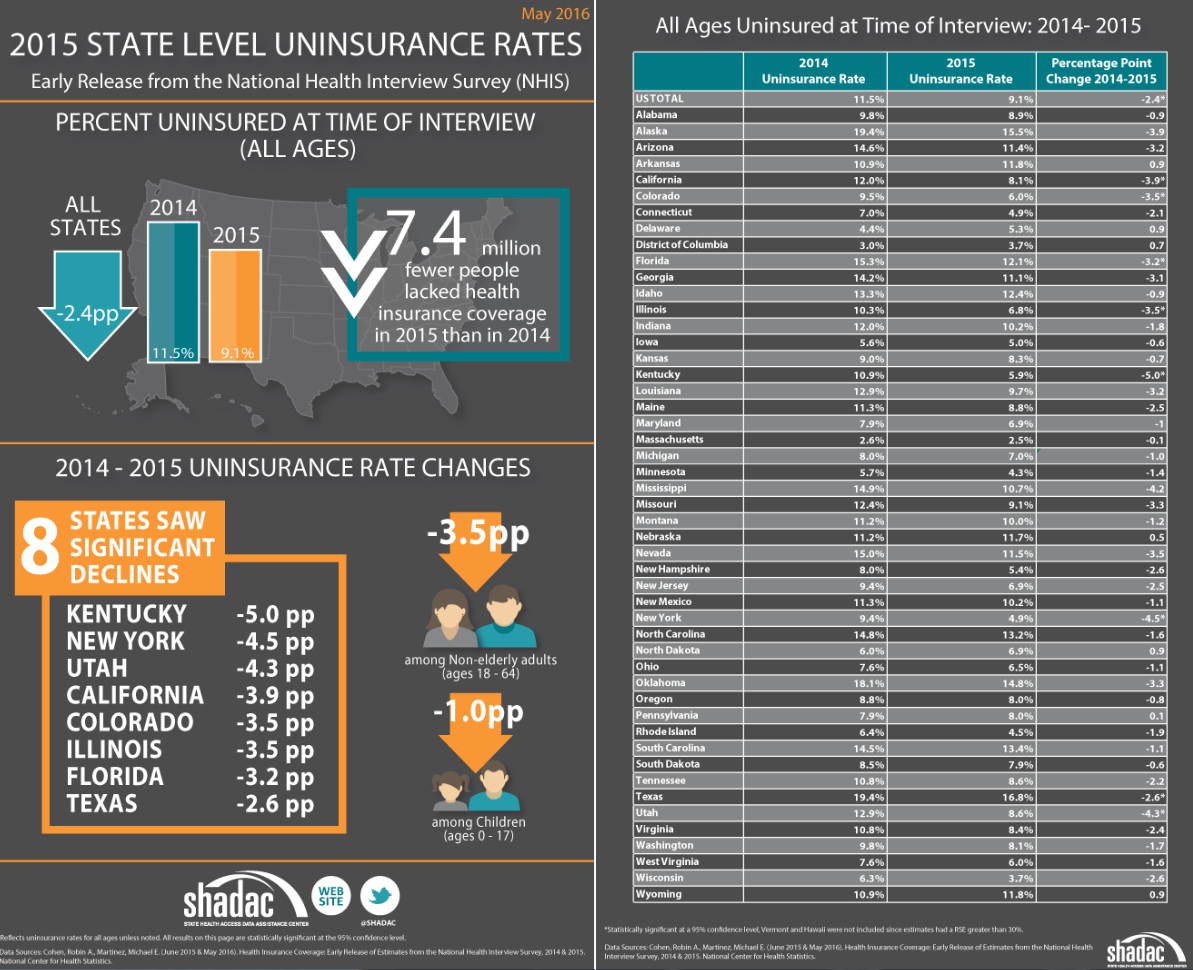Blog & News
Early Release of 2015 Full-Year NHIS: National Uninsured Rate Drops to 9.1% (Infographic)
June 01, 2016:New insurance coverage estimates from the 2015 National Health Interview Survey (NHIS) Early Release Program show a 2.4 percentage-point decline in the national uninsured rate from 2014 to 2015 (from 11.5% to 9.1%). This continues a downward trend in the national uninsured rate that began in 2011 after a decade of general growth.
SHADAC researchers compared 2014 and 2015 state-level uninsurance estimates for 48 states and the District of Columbia.1 The overall uninsured rate fell significantly in eight of these states from 2014 to 2015. Declines ranged from a 5.0 percentage-point drop in Kentucky (10.9% in 2014 to 5.9% in 2015), to a 2.6 percentage-point drop in Texas (19.4% in 2014 to 16.8% in 2015). These declines were smaller overall than the declines between 2013 and 2014, during which time the state-level declines ranged from 3.0 percentage points in Michigan to 12.5 percentage points in West Virginia.
Age Groups
The overall national uninsured rate among non-elderly adults (18 to 64 years old) fell by 3.5 percentage points (from 16.3% in 2014 to 12.8% in 2015), and the nationwide uninsured rate for children (0 to 17 years) decreased by one percentage point (from 5.5% in 2014 to 4.5% in 2015). Non-elderly adults saw a slightly smaller uninsurance decline in 2015 than in 2014, when the rate fell 4.1 percentage points from the previous year (to 16.3% in 2014 from 20.4% in 2013).
About the NHIS
The NHIS is conducted by the National Center for Health Statistics (NCHS), and its Early Release Program provides analytic reports and preliminary microdata files on an expedited schedule in order to provide early access to the most recent information from the NHIS. In addition to annual estimates, the Early Release Program provides quarterly estimates for each calendar year, incorporation three additional months of data for each quarter.
1States were included only if estimates with relative standard errors below 30 percent were available for both years. Vermont and Hawaii did not meet this criterion.










